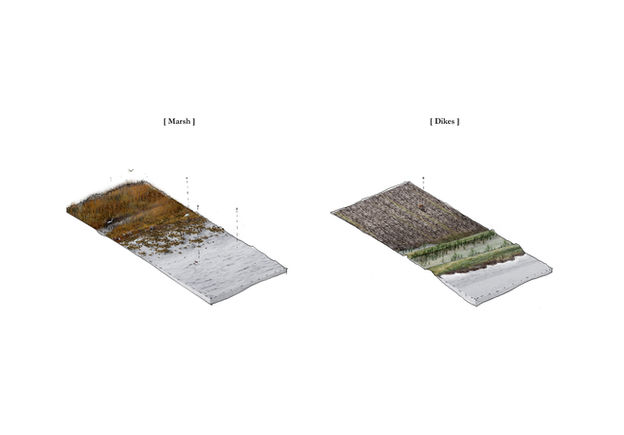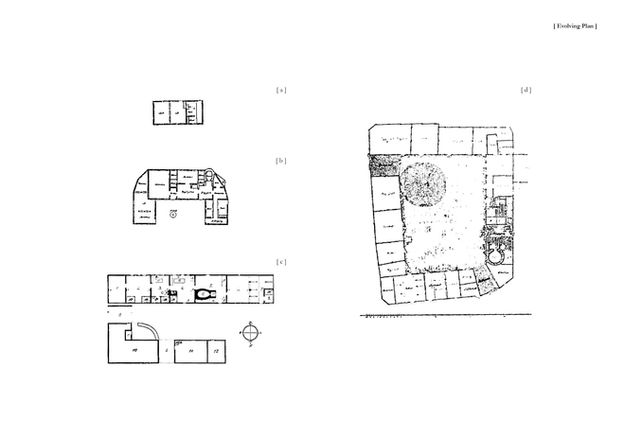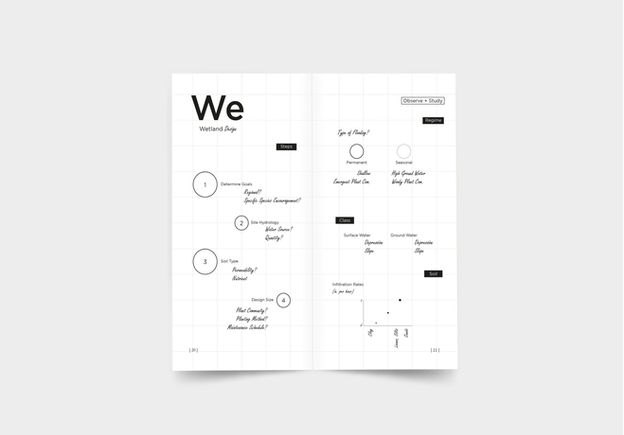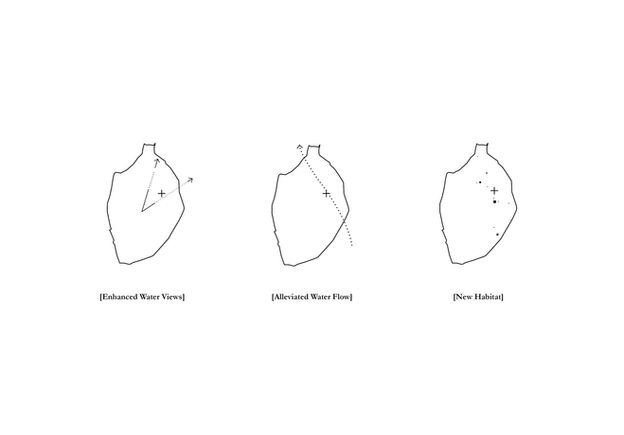A proposal for a wetland and accompanying lodge on the island of Egholm, Denmark.
A land of nuanced topography, smooth transitions and incessant winds, Denmark is perhaps most marked not by mountain range or forestry, but by its moors and marshlands.
Remains of Stone Age dolmens tell of an ancient fascination for the powers hidden in pools, ponds and lakes, while Bronze Age Danes are known to have been largely seafaring.
In the context of Iron Age climate cooling, communities began building strong, warm shelters and adopted the more reliable life of agriculture. Across the entire country, livestock and farmer took refuge under one roof in what would become a little-evolving archetype.
Few invasions of, or migrations to, the harsh Nordic territory have cemented the survival over centuries of the ‘Danske Bondegård’, a basic yet telling monument to Denmark’s historical preoccupation with rural sustainability.
As a vernacular form, farmyards employ a series of practices that are in their very nature, sustainable.
Modular structural elements allow both for the use of smaller pieces of raw material (timber lengths) as well as for ease of assembly and part replacement. Locally sourced materials whether reed, lime, granite or seaweed permit a practical upkeep of the building over time.
This regional character of farmyards produces mutations in their structure, envelope and layout depending on location. That being said, for its abundance in agricultural landscapes, grass found particularly prolific use in the roofing of farm buildings.
On the island of Egholm, low-lying farmland and their accompanying dwellings are threatened by rising sea levels and the erosion of their protective dikes.
'Wet Lodge' asks how the introduction of marshland might inform an evolved farmhouse design while adapting the natural landscape to deal with encroaching waters.
‘Redeeming a swamp comes pretty close to making a world’
Coastlines are the zones in which land and water bodies meet, but the tidal nature of these waters define an area better described as a threshold than a line, for they fluctuate and in large part infiltrate land’s outline by way of rivers and fjords.
Like mankind, much wildlife finds at these ecotones ideal conditions for proliferation, both in the water and out, both plant life and animal.
Thresholds are not though, gentle environments, and they are subject to the brunt of climatic volatility. Gail, tsunami, storm-surge or sea-level rise.

In lower-lying, temperate zones of our continents, flood zones define the seasonal reach of their liquid neighbour. Known generally as wetlands, these territories have characteristic hydric soil, high water-tables, aquatic plant life and are the most biologically diverse of all ecosystems.
Wetland species are known as its biota, split into three principal categories: flora, fauna and algae.
Local variables such as salinity, sediment deposition, temperature, soil elevation, inundation and soil porosity further define the type of wetland: the swamp, the marsh, the bog, the fen and the mangrove forest.

Study of wetlands has shown that while they provide a wealth of animal and plant support, they also aid greatly in the sequestration of carbon, the purification and storage of water, and in shoreline stabilization.
Estimates show that wetlands currently cover 12.1 million km² of Earth, 54% of which are permanently inundated, 46% of which are seasonally flooded.
Despite their evident utility, resilience and inexpense, the global ubiquity of wetlands suffered a 65% loss in the 20th c. And their clearance is often for farmland exploitation or harbour construction. They are drained and dammed, and incur a total loss of natural life.
But while mainstream real-estate development can ignore concerns for wetland biodiversity, recent research highlights, in addition, the value of their human services, whether in heritage, recreation, psychological or educational ways.


Furthermore, the contemporary concern for sea-level rise adaptation acknowledges, in small part, the potential of natural infrastructures such as ‘living breakwaters’, ‘blue dunes’ and wetlands in protecting vulnerably located coastal cities. Across disciplines, wetland’s combination of aesthetic forms and ecological function should, to designers, make them the sustainable coastal typology.
Guidelines drawn up to help re-establish wetlands across the world detail the necessary steps to reducing erosion, increasing bird-life habitat and managing invasive species in order to quickly restore resilience in the local ecosystem.




























